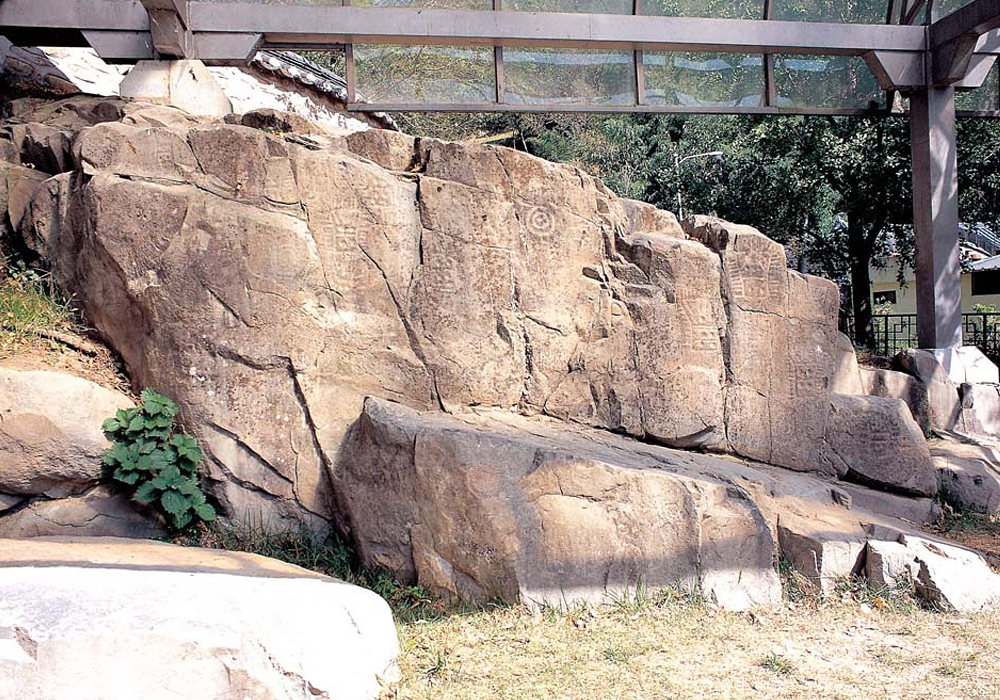Petroglyphs of Janggi-ri, Goryeong

These rock engravings are on a rockface of a small cliff, measuring 3m in height and 6m in width, located near the entrance to Alteo Village.
Petroglyphs, as rock engravings of this type are also known as, mostly date from prehistoric times and are found on the surface of a large boulder, cliff or other sites considered sacred.
Petroglyphs, as they are closely associated with prehistoric cultures of northern regions, may offer important clues about the origins of Korean people and the path of their migration.
The engraved patterns and images include concentric circles, crosses and face masks.
There are four concentric circles, each with three rings, measuring 18-20cm in diameter.
Concentric circles are presumed to symbolize the sun and represent, by extension, the sun god.
The crosses are engraved inside a shallowly-incised 15㎝ by 12㎝ rectangle.
The crosses are interpreted to represent the geographical expanse of a tribal society.
The mask-like images, measuring 22-30㎝ by 20-40㎝, have details like hair and beard and roughly-carved facial features.
These images appear to have been intended as talisman-like protective symbols.
These petroglyphs may be seen in continuity with religious practices in prehistoric agrarian societies where people prayed to the sun god and built altars carved with symbols and signs.
Based on stone implements and pottery items that were discovered in the nearby Neolithic sites (Geumsallyeong) and dolmen sites, these petroglyphs are likely to have been created in the late Bronze Age (B.C.
300-0).
The petroglyphs of Janggi-ri are invaluable for research into prehistoric society, culture and religion and also hold a great importance for the history of art.
Petroglyphs, as rock engravings of this type are also known as, mostly date from prehistoric times and are found on the surface of a large boulder, cliff or other sites considered sacred.
Petroglyphs, as they are closely associated with prehistoric cultures of northern regions, may offer important clues about the origins of Korean people and the path of their migration.
The engraved patterns and images include concentric circles, crosses and face masks.
There are four concentric circles, each with three rings, measuring 18-20cm in diameter.
Concentric circles are presumed to symbolize the sun and represent, by extension, the sun god.
The crosses are engraved inside a shallowly-incised 15㎝ by 12㎝ rectangle.
The crosses are interpreted to represent the geographical expanse of a tribal society.
The mask-like images, measuring 22-30㎝ by 20-40㎝, have details like hair and beard and roughly-carved facial features.
These images appear to have been intended as talisman-like protective symbols.
These petroglyphs may be seen in continuity with religious practices in prehistoric agrarian societies where people prayed to the sun god and built altars carved with symbols and signs.
Based on stone implements and pottery items that were discovered in the nearby Neolithic sites (Geumsallyeong) and dolmen sites, these petroglyphs are likely to have been created in the late Bronze Age (B.C.
300-0).
The petroglyphs of Janggi-ri are invaluable for research into prehistoric society, culture and religion and also hold a great importance for the history of art.






